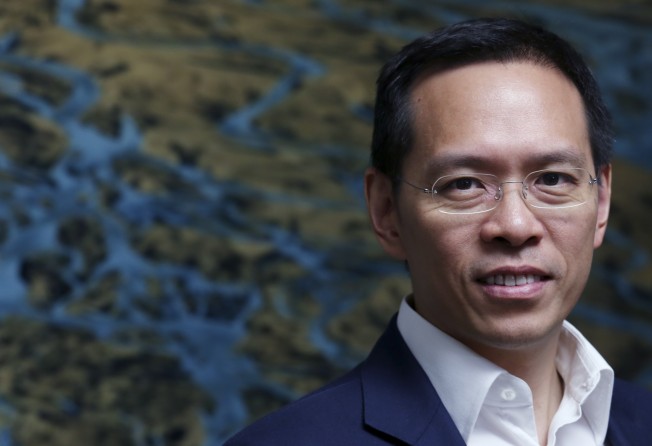Cheng family scion helps Chiaphua focus on Vietnam
Jonathan Cheng previously worked at Lehman Brothers, Peregrine Direct Investment and Capital Z Asia

Jonathan Cheng, a member of the third generation of the family that runs 110-year-old conglomerate Chiaphua Group, manages the family’s US$100 million Jen Capital Vietnam Property Fund.
He previously had private equity and corporate finance roles at Lehman Brothers in New York and Hong Kong , Peregrine Direct Investment and Capital Z Asia.
In 1986 Vietnam launched a political and economic renewal campaign (Doi Moi) that introduced reforms intended to facilitate the transition from a centrally planned economy to a form of market socialism officially termed “socialist-oriented market economy”.
Doi Moi combined economic planning with free-market incentives and encouraged the establishment of private businesses, including foreign-owned enterprises, in the production of consumer goods and foreign investment.
The Cheng family ventured into Vietnam, believing its open door policy could offer a golden opportunity to expand beyond Hong Kong, and became the first Hong Kong developer in the country.
After spending about nine years as an investment banker, Cheng decided to join the family business and focus on Vietnam property development and investment.
Can you tell us more about the family business?
My grandfather, Cheng Yik Chee and his three brothers, founded the Chiaphua group in 1906 in Chaozhou as a small privately held metal stamping business, and moved its base to Hong Kong in 1937.
Over the past 50 years, Chiaphua has been involved in the manufacturing of an extensive range of industrial and consumer products, including computers, clocks, sea-freight containers, lighters, toys, silver-plated hollowware, security and telecommunications equipment, electrical appliances, motors and power tools. Today, the group is develop into a global corporation with an annual turnover exceeding US$1 billion.
When did the family business branch out to property development?
In the 1960s, the group’s factories started to relocate outside Hong Kong and offered an opportunity for us, the family, to begin property development through demolishing these factories to make way for residential or commercial projects.
Since then, we have developed more than 200 projects including high-rise residential units, urban renewal projects, Grade-A office buildings, industrial buildings, starter homes, luxury homes and serviced apartments.
The capabilities accumulated from experience enabled the group to expand its development presence to include Hong Kong, China, Southeast Asia, North America and the Middle East.
In addition, we formed joint ventures with other major property developers such as Sun Hung Kai Properties, Cheung Kong, K Wah International and Henderson Land Developments in major development projects.
Since 1991, we’VE started to expand our property business to Vietnam. We should be the earliest Hong Kong company to invest in Vietnam’s property market.
Why did the group venture into Vietnam, where the economy has not yet developed?
Twenty four years ago, Vietnam’s government planned to privatise the state-owned enterprises by offering them for tender. I was sent to Vietnam for three months to conduct due diligence for some manufacturing plants that we were interested in buying. However, the Vietnamese government cancelled the privatisation plan.
It happened that one of our business partners owned a parcel of land in the once prestigious diplomatic area and we had property development experience. In the end, we ended up with the first investment in Vietnam being a US$10 million Grade-A office building, Saigon Tower, in the downtown of Ho Chi Minh City. When it was completed in 1997, it was the city’s first Grade-A office project.
What was the Vietnam property market like at that time?
In 1991, there were only a few high-rise buildings. The site was just opposite the former American embassy building and close to Notre Dame Cathedral; it was definitely prime land for a Grade-A office project.
We foresaw huge demand for quality office space as lots of foreign firms planned to invest in Vietnam after it adopted its opening up policy in 1986.
Our Saigon Tower become a top pick among foreign corporations with international blue-chip tenants such as Baker & Mckenzie and JP Morgan. After holding the building for 15 years, we sold Saigon Tower to a Japanese group for more than five times what we had invested in the project.
In July, the Vietnamese government relaxed the rules on allowing foreigners to buy property. What are these changes?
Anyone with a passport stamped for entry into Vietnam is eligible to purchase property. These foreigner purchased properties can be leased out for income. Separately, land and property that are under land lease are often 50 years of lease duration, though in some cases 70 years has been approved.
We are optimistic about the market outlook as 60 per cent of the country’s 90 million people are below 30 years old. Ho Chi Minh City is like Shanghai, while Hanoi is similar to Beijing. The rapid economic growth of more than 10 per cent will drive up housing demand.